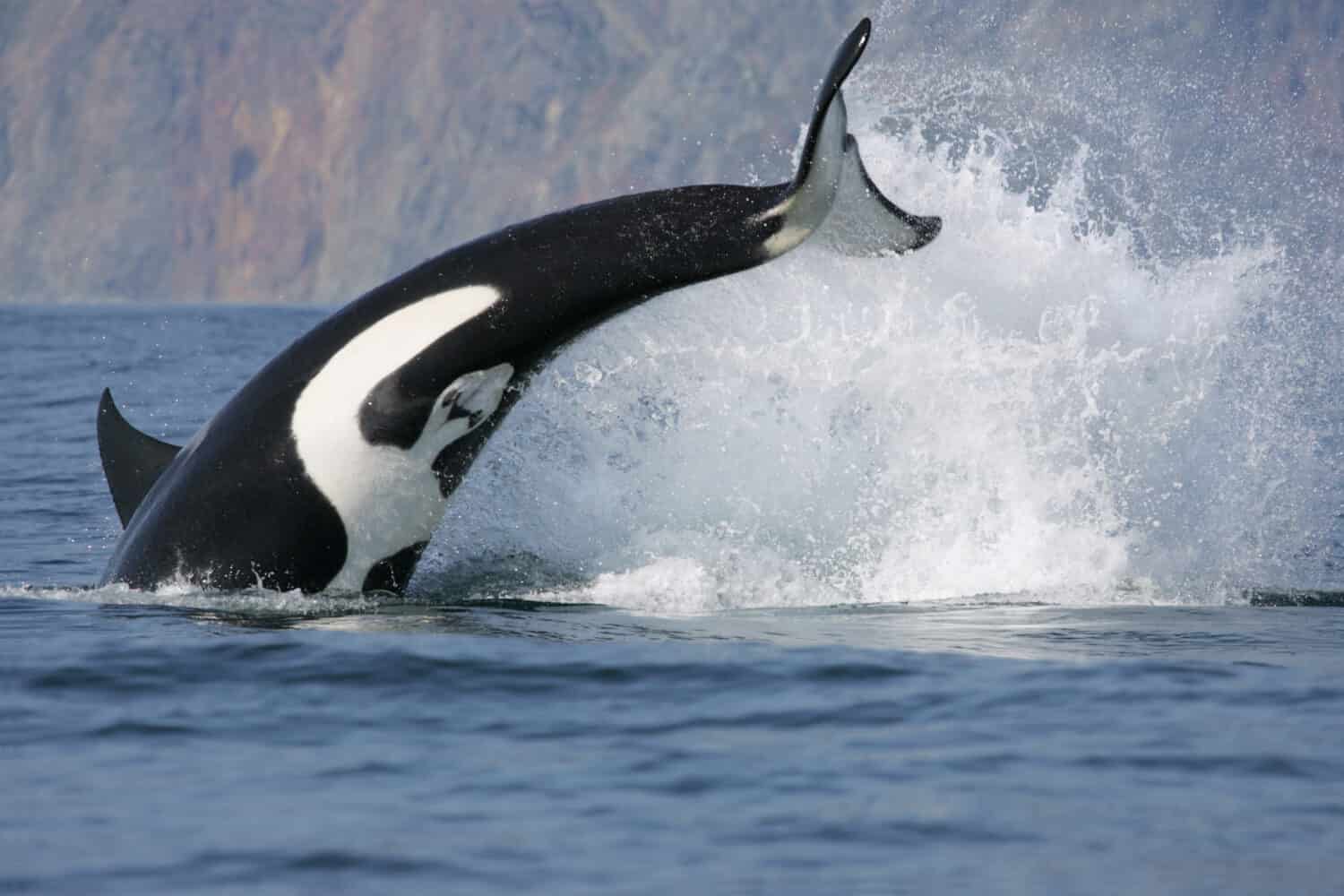Continue reading for our analysis...

Captured off the coast of San Diego, this astonishing clip captures the moment that a dolphin is punched on the chin by a killer whale! The dolphin rises above the surface, but the orca is not too far behind. The poor dolphin buckles and is thrown backward. We don’t see what happens next as it is under the water, but it is likely that the dolphin is stunned and ends up as the killer whale’s next meal.
Are Killer Whales and Dolphins Related?
Yes, both dolphins and killer whales belong to the Delphinidae family, which also contains pilot whales. Killer whales are much larger, but they share a stream-lined body shape, and both species are very agile in the water. What’s more, both species visit the shallower waters near coastlines and can often be viewed from the shore in many countries. Groups of both dolphins and killer whales are called pods.
What Do Orcas Normally Eat?

Orcas can hunt sea lions by beaching themselves.
©Foto 4440/Shutterstock.com
Orcas are the top hunters in most marine ecosystems – at the top of the food chain and with no natural predators. They are brutal and highly successful predators who are willing to target prey on ice floes, on the shore, and in water of varying depths. Scientists have established what orcas eat by studying their stomach contents and blubber analysis. Studies have shown that for some pods, their diet is made up of mainly seals, and fish (mainly mackerel). However, we also know that they eat sea lions, sharks, squid, sea turtles, and sea birds. As we see in this clip, they are also happy to hunt dolphins.
What Hunting Styles Do Orcas Normally Use?
Orcas are such successful predators because they are highly intelligent. This means that they will adapt their hunting strategy to fit the prey that they are targeting. Older orcas teach the younger members of the pod how to hunt. For example, they use a ‘beach storming’ approach when hunting sea lions on beaches. They purposely beach themselves and grab the unsuspecting sea lions who think that they are out of reach! Others use a karate chop method using their tail. Once they have located a target, often a shark, they push it to the surface. Then they turn while raising their tail in the air, bringing it crashing down on the victim’s head. Now, the prey is too stunned to try swimming away, so the orca flips it over to make it enter a state called ‘tonic immobility. Now, the shark can’t move at all and soon gets eaten!
Thank you for reading! Have some feedback for us? Contact the AZ Animals editorial team.







